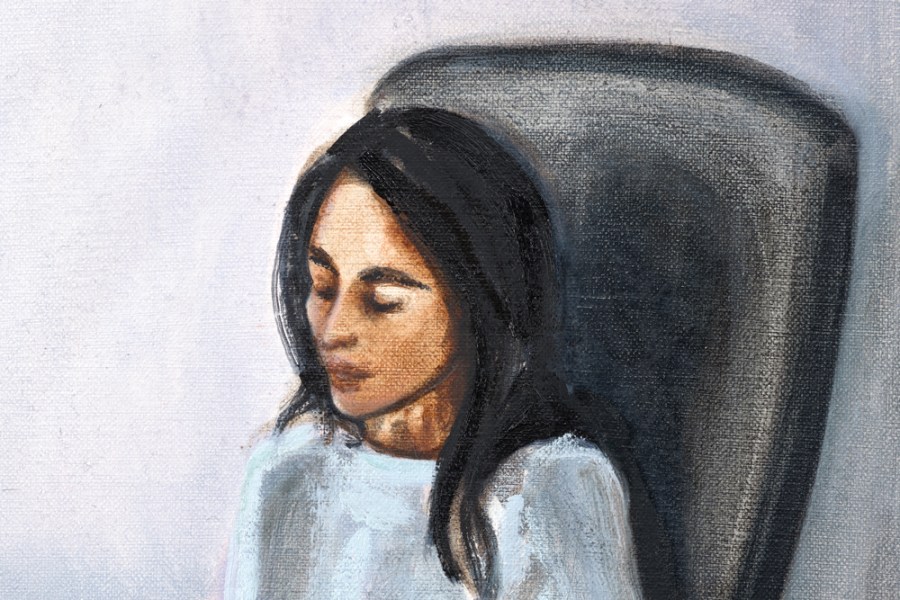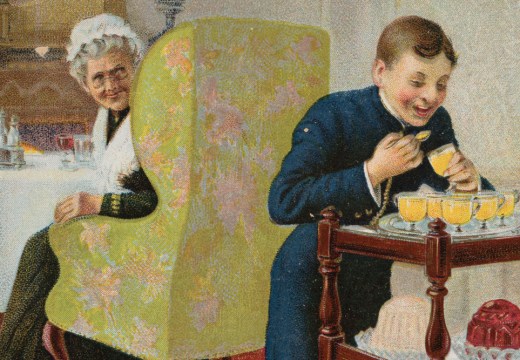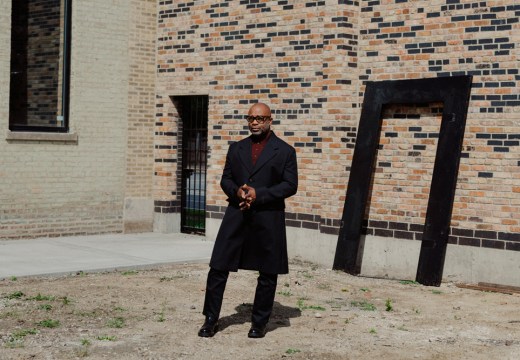From the September 2023 issue of Apollo. Preview and subscribe here.
As Paris emerged from the smoke of the Great War, Gwen John painted ten versions of a single well-lit composition: a soberly dressed young woman reading in a wicker chair lined with white cushions. In some she holds a letter, in others a book, her face tilted over the text with the serene concentration of a Van Eyck Madonna studying her prayer book. There is a vessel of some description on the round table beside her – a brown teapot, a pink cup and saucer, a shallow bowl. She is being looked after.

The Convalescent (c. 1923), Gwen John. Fitzwilliam Museum, Cambridge
The sitter for The Convalescent was a professional model who appears in many guises in John’s later works. This is a posed scene: not the documentation of an intimate emerging from sickness, but the obsessive immersion in and revision of a composition that spoke of depleted strength, hope, life starting again. The paintings are undated yet there is a sense of sequence in their rendering, a clearing away of clutter, an escalation from the personal to the symbolic, from the girl reading in a dark shawl with a lock of hair falling across her face, to a simplified arrangement: plain dress, hair swept back.
In 2021 and 2022, the British painter Matthew Krishanu returned to The Convalescent in three paintings of a dark-haired woman seated in a plain blue robe, reading, perfectly composed after John’s paintings. The final version of Krishanu’s The Convalescent (after Gwen John) (2022) was shown over the summer at the Whitechapel Gallery in London.

The Convalescent (after Gwen John) (2022), Matthew Krishanu
This woman is seated in a sticky black vinyl armchair, her austere gown is a hospital robe, and in place of the glossy brown teapot beloved of John we find a plastic water jug with a jarring blue lid, of a type familiar from NHS surgical wards. There is a change in tone from John’s paintings that has less to do with the century that separates the two bodies of work than from the felt weight of the scene. Both sitters face the light, yet there is a darkening veil washed over Krishanu’s updating. The yellow spotted wallpaper that lifts John’s paintings into sweetness has been replaced by a coalescing shadow that gathers in the space behind his reader.
Her face is exquisitely rendered, painted with a deft economy that comes of familiarity, for the sitter in this contemporary Convalescent is Krishanu’s wife, the writer Uschi Gatward. We encounter her here seated in a hospital chair a few months before her death from cancer at the age of 49. At the Whitechapel, The Convalescent (after Gwen John) was positioned as part of a series – In Sickness and In Health – charting the couple’s relationship. In early paintings Gatward is positioned beside an open book, perched tiny on the open expanse of a bed. She sits in a wedding dress beside the off-kilter emptiness where Krishanu should be seated. A baby arrives, limbs curled, on a plain bed with a view out over a grid of modern flats. We find the baby again, still tiny, lying beside her mother on a brass bed in an old room. Then comes a procession of other beds, these in hospitals and hospices.

The Wedding Dress (2009), Matthew Krishanu
I came upon In Sickness and In Health unexpectedly, at Whitechapel on other business, brisking through the summer show. Arrested by Krishanu’s paintings on my inventorial breeze-through, I stood in front of The Convalescent (after Gwen John) and wept. Such feeling in this small painting. The weight of symbolism bound up in this gesture of collaboration between husband and wife, as she arranges herself for him in echo of a favourite work and invites him to paint her – to observe her, to document her, to engage profoundly with her – in her illness.
My shocked response to Krishanu’s Convalescent sent me back to the John series, which had become so familiar that I perhaps no longer saw it fully. I remembered two canvases from the series at Pallant House earlier this year, how I’d appraised them formally, judging the progressive refinement of the composition, the air of sanctity, the delicate dryness of John’s chalky paint dabbed so sparingly onto the canvas. How different it would have been to instead approach these works emotionally and imagine that John and Krishanu held grief in common – to understand these apparently cool, formal studies as infused with sorrow, and the act of painting them as a means of working through.

Bedroom (Mother and Baby) (2022), Matthew Krishanu
The woman in blue is commonly read as a cipher for France and her people, recuperating. It was not only the war dead who crowded John, though. Her great love Rodin had died from a stroke in 1917. An early version of The Convalescent – perhaps the first – was made for John’s friend and fellow artist Isabel Bowser, then ill with cancer. The optimism of the title was betrayed: Bowser died in October 1919, before the painting was completed.
For both John and Krishanu, revisiting a familiar composition becomes a ritual undertaken within the process of mourning. This act of repetition, returning to the familiar forms and face of a beloved painting, allows for a mode of engagement that goes beyond conscious thought to become something devotional and meditative, akin to a learned sequence of prayers or gestures. The simple well-mapped composition of The Convalescent presents itself as a structure that can be trusted to bear the weight of grief.
‘Gwen John: Art and Life in London and Paris’ is at Pallant House Gallery, Chichester, until 8 October.
From the September 2023 issue of Apollo. Preview and subscribe here.
Unlimited access from just $16 every 3 months
Subscribe to get unlimited and exclusive access to the top art stories, interviews and exhibition reviews.














![Masterpiece [Re]discovery 2022. Photo: Ben Fisher Photography, courtesy of Masterpiece London](http://www.apollo-magazine.com/wp-content/uploads/2022/07/MPL2022_4263.jpg)
It’s time for the government of London to return to its rightful home